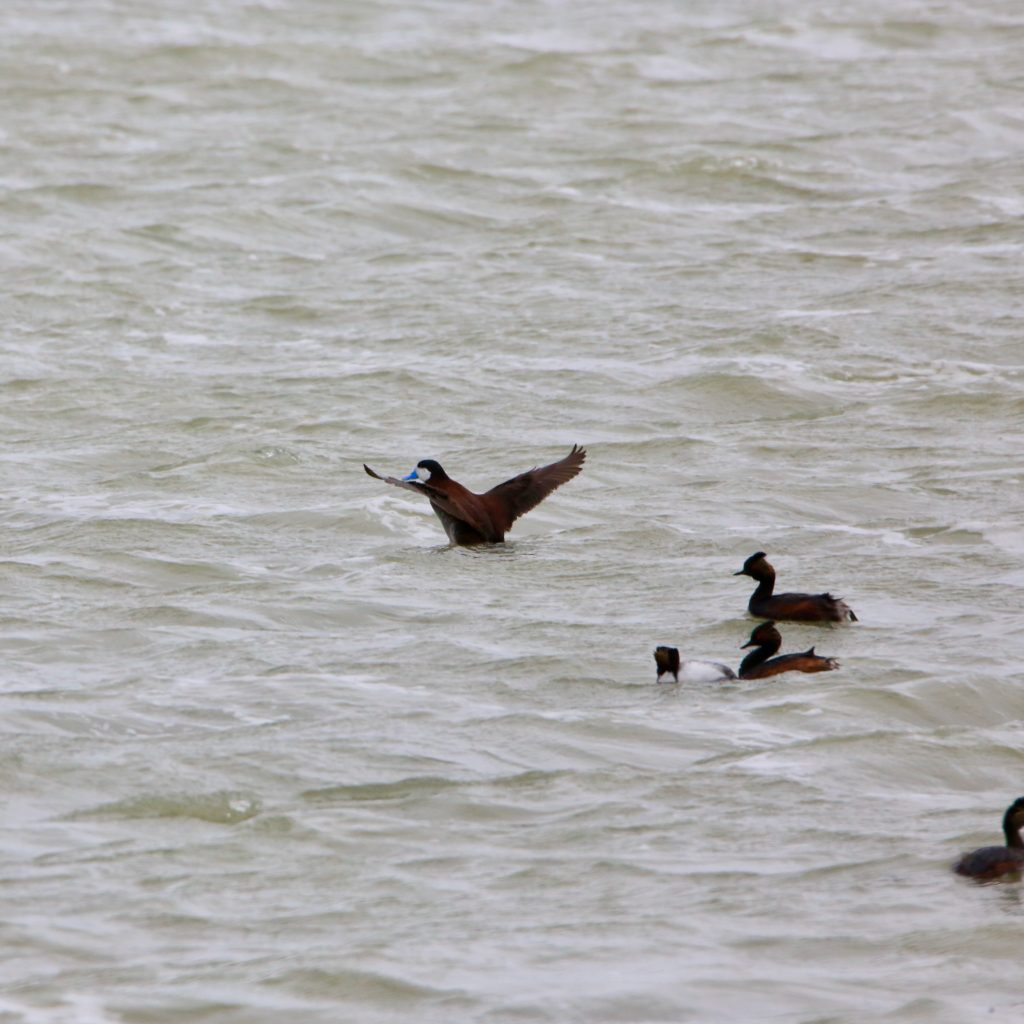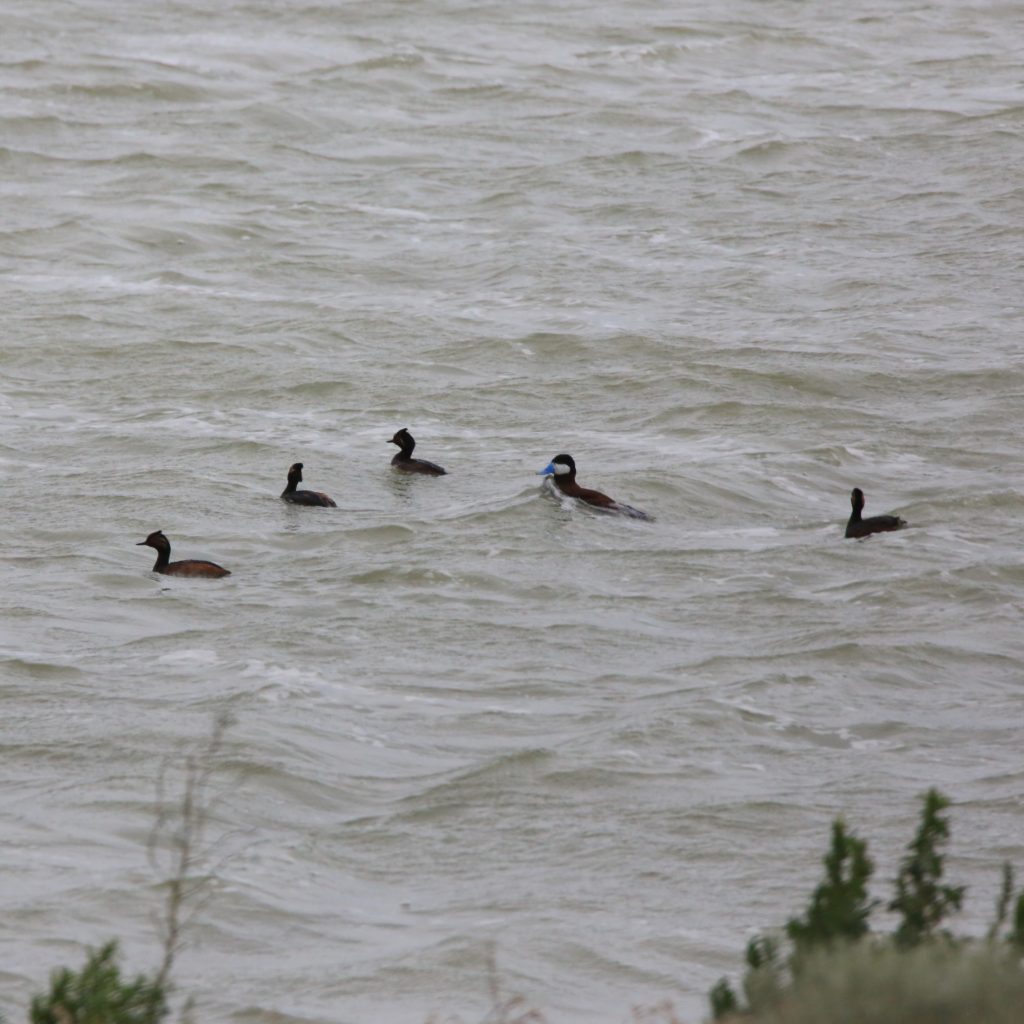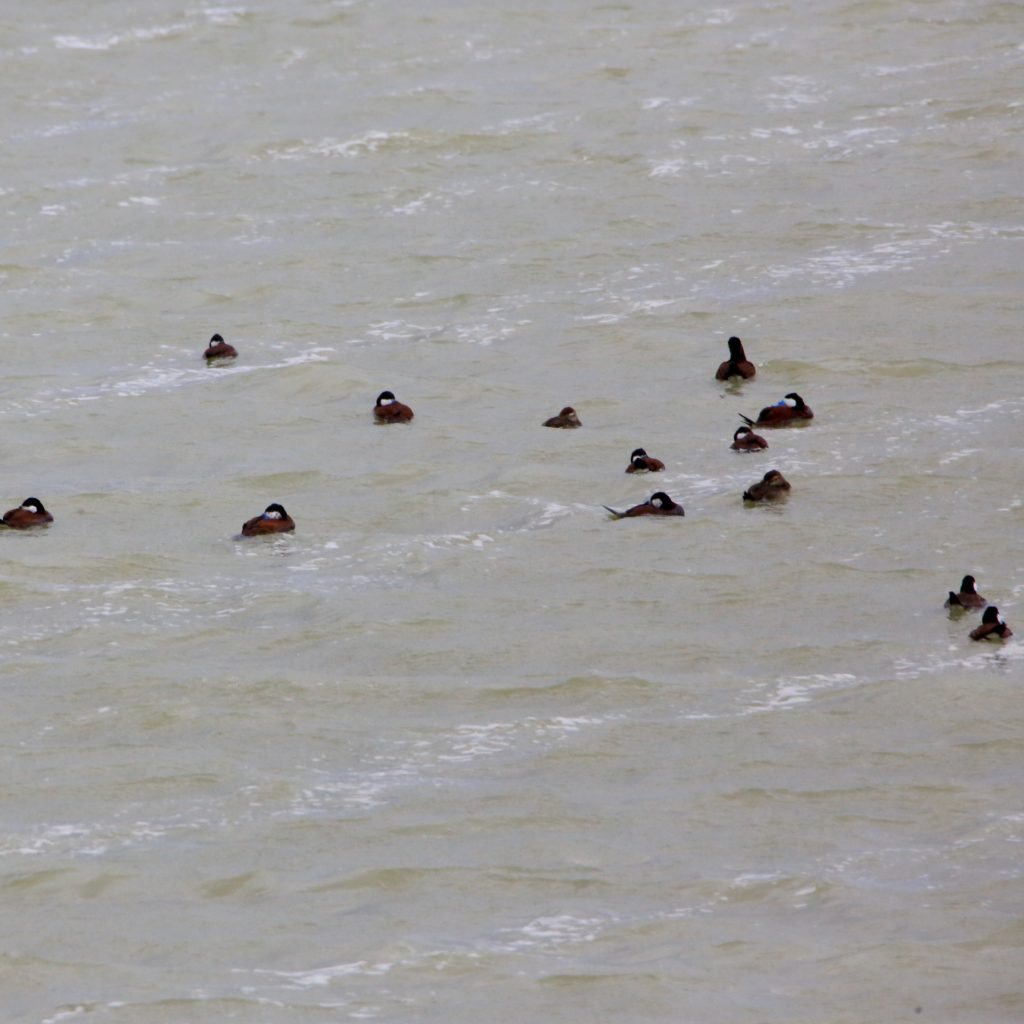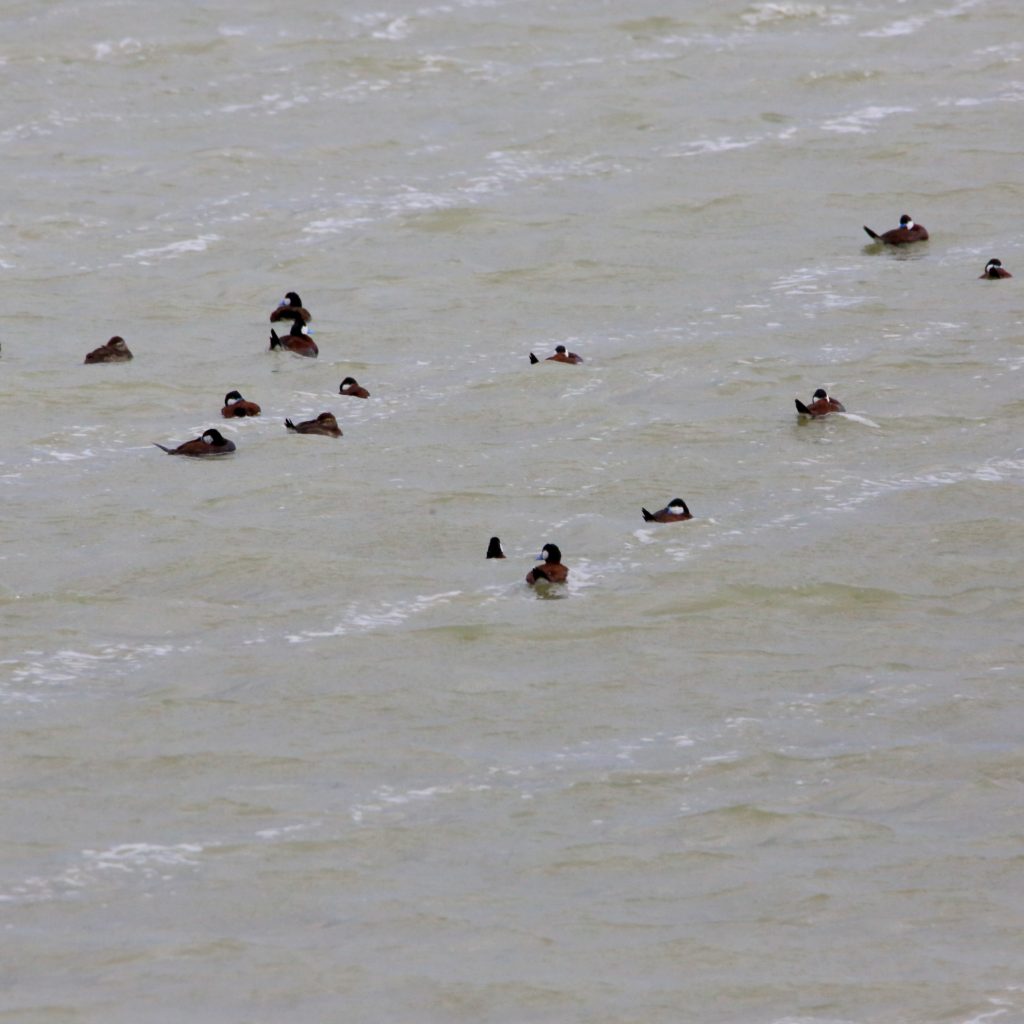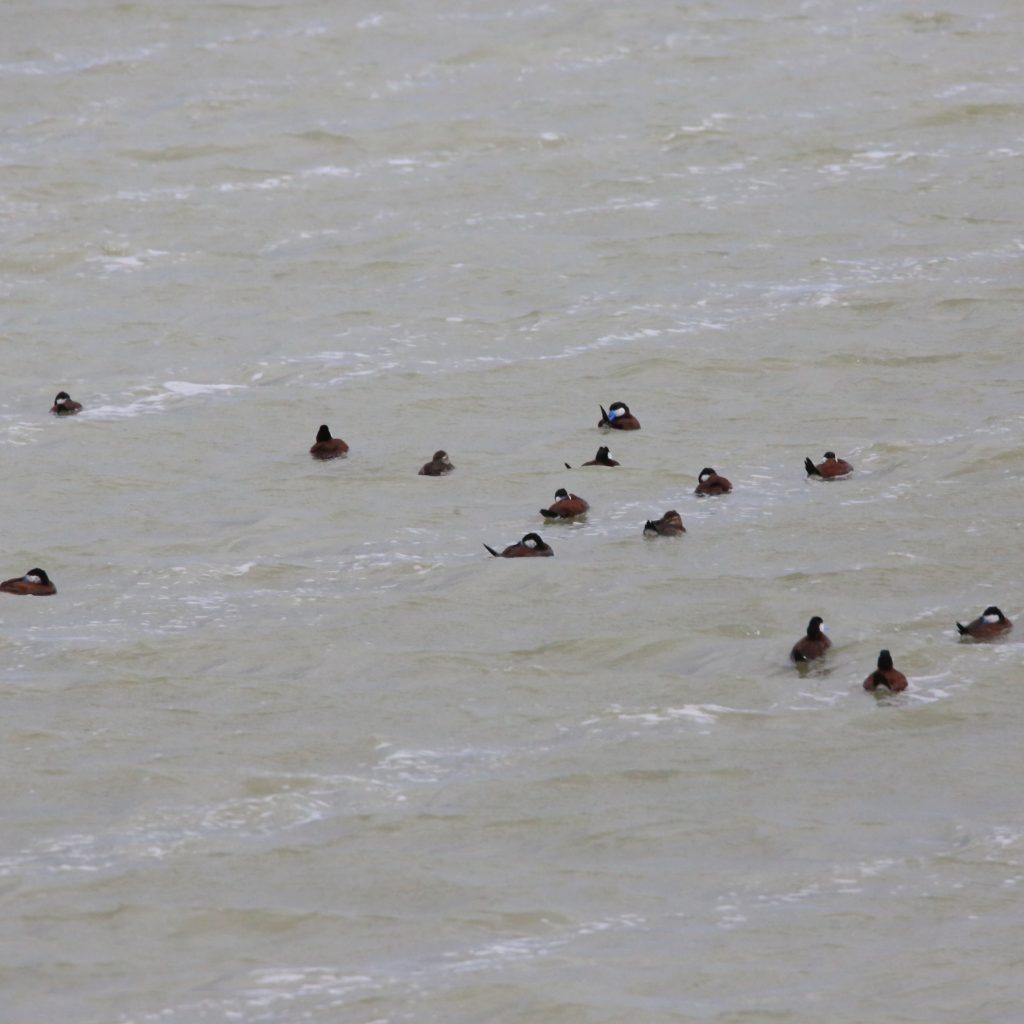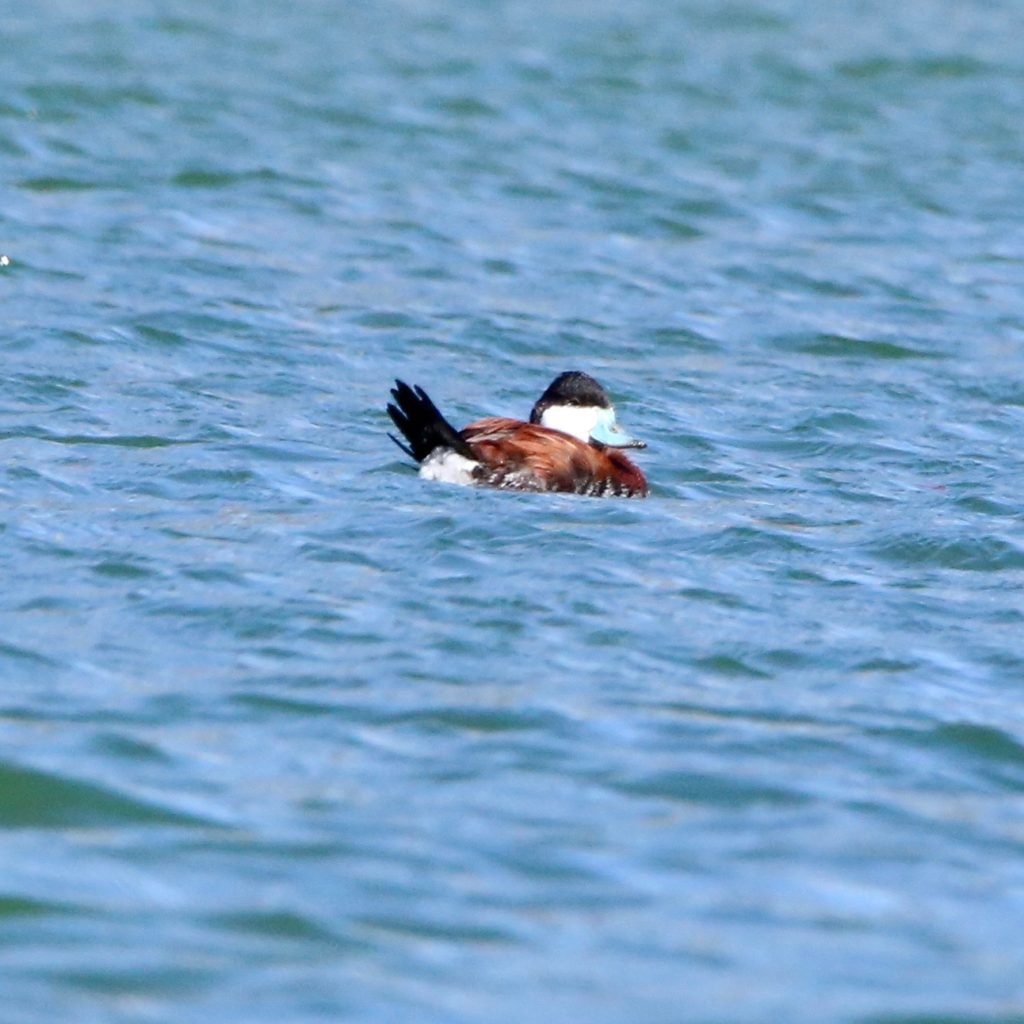
Ruddy Duck
A Ruddy Duck is a fun bird to see while bird watching. Below are some tips to help you identify Ruddy Ducks. We have also put together a list of fun Ruddy Duck t-shirts, Ruddy Duck bird patches, bird houses, bird feeders, binoculars, stickers and other fun bird watching items.
About Ruddy Ducks
The ruddy duck is one of the stiff-tailed ducks from North America. It was initially a duck from Jamaica but spread to other parts of the world such as the West Indies and Central Colombia.
Description and Identification
The Ruddy Ducks are small ducks with long, flat bills and a stiff tail that stays erect. Their wings are considerably small and have necks that are short and thick. The physical features of Ruddy Ducks are different for males and females. The females can be easily identified by the dark streaks across their grey faces with a black spot on top whereas the males have a clear, white face. Another feature that sets apart the males and females is the colour of their bill. While males have bright bluebills, the females are sported with dull grey bills. The males are bigger than females in terms of size and wingspan. The juveniles are physically similar to the females except for the less noticeable spot on top of the younger ones’ heads.
Ruddy Duck Size
Length: 34 to 43 cm
Weight: 560 g
Wingspan: 47 cm
Both the males and females of the species are of equal size.
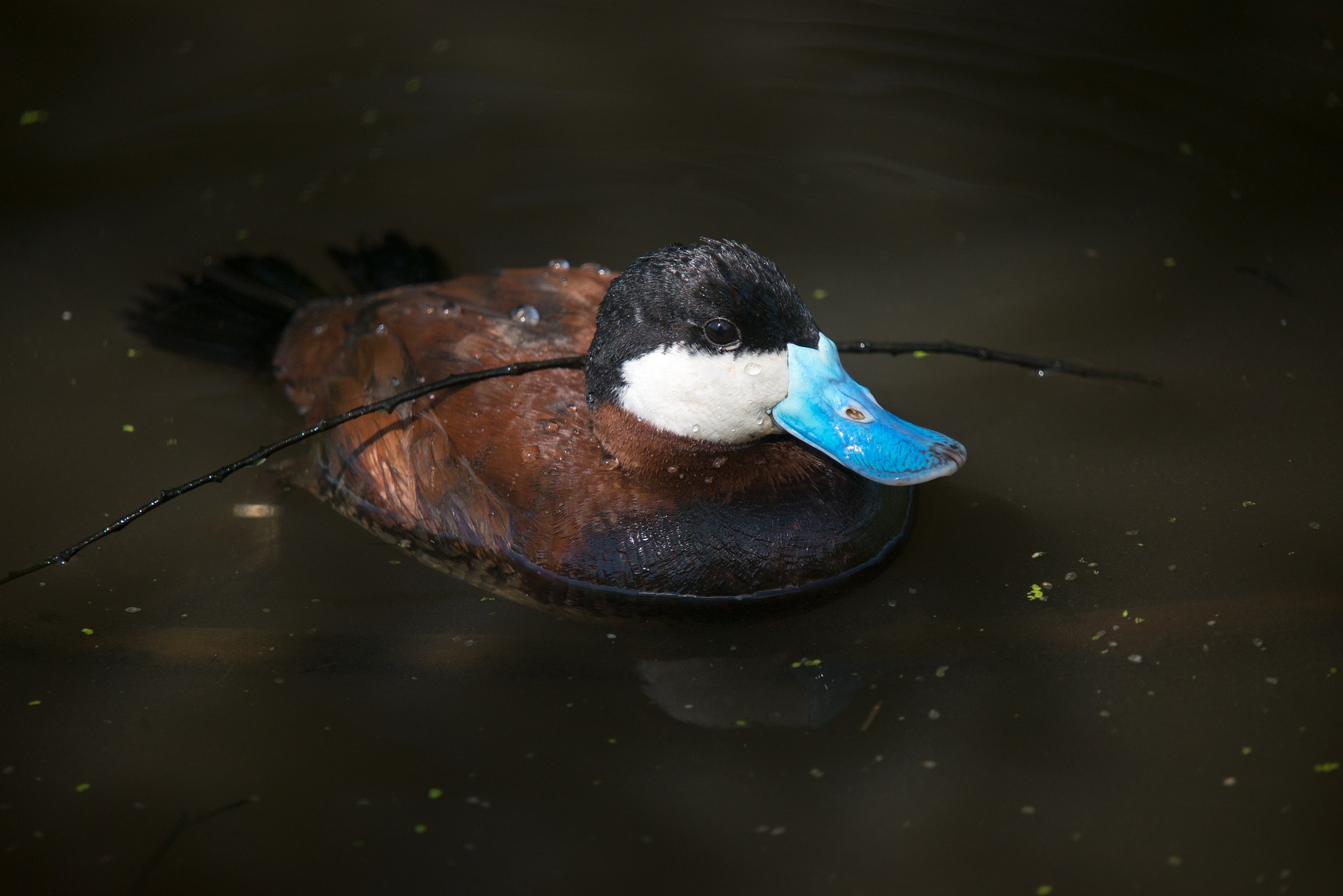
Ruddy Duck Appearance
They are small and compact with stout bills and long, straight, stiff tails that they hold upwards. The male ducks have bright white cheeks that contrast sharply with the black caps at the tops of their heads. In summer, they are chestnut colored with bright blue bills. Females and juveniles are a dull brown color and have a black stripe across their cheeks.
During winter, their plumage changes and the males acquire a dull gray-brown color on their upper side and dull gray on the lower sides. Females and juveniles retain their colors.
Ruddy Duck Habitat
Ruddy Ducks can be easily found during springs and autumns in waterbodies including harbours and small lakes. During the breeding season, these ducks can be found in freshwater marshlands, lakes and ponds. In summers, they can be found in wetlands in the inner part of the West. winters are normally spent in shallow water bodies, marshlands and lakes that are not frozen. Ruddy Ducks prefer the marshy lands to any other type of settlement as there is thick vegetation in these marshlands which allows them to protect their nests from intruders during the breeding season.
They mainly inhabit marshy vegetation that is near a water body. They mostly prefer ponds and lakes. During winter, they migrate and source for a new place to settle in areas near unfrozen lakes and ponds that have some vegetation cover to hide them from predators.
Range and Migration

Ruddy Ducks are a migratory species that are found mainly in North America and South America. These birds migrate during winters to the southern parts of North America. They usually migrate during the night and in small groups. The Ruddy Ducks that reside in parts of The Caribbean and South America can be considered non-migratory as they rarely leave their nests during winters as the climate is suitable and endurable in those parts. Their migration period is quite long during spring and autumn. The spring migration starts from February and ends by May or June and the fall migration is usually from August to November.
Ruddy Duck Feeding
Ruddy Ducks can be categorized under omnivorous as they feed on plants and occasionally on small animals. Their bill acts as a sieve and helps them consume small insects and fish. The main part of their diet consists of seeds and roots of plants like pondweeds and grass. During the breeding season, they mainly feed on insect larvae that are present in the water. Their preference in diet changes to insects in the summer season. They feed on various insects depending on their availability each season.
They are mainly herbivorous and feed on plant products. Their main source of food is seeds from aquatic plants and the roots of some aquatic plants. However, when the plant supply is low or when their nutrition requirements demand it, the ducks feed on aquatic insects and crustaceans to obtain some form of proteins.
Nesting
The Ruddy Ducks build their nests in the dense marshy areas. The female ducks are involved with the task of building nests that are generally in the shape of a basket as they are covered using plants and weeds to hide the nests from intruders. The nests are placed a decent distance above the water and are built using grass and other green plants. The males attract their partners by shaking their heads vigorously so that their bills hit their breasts. They run across the water with violent movements using the wings. The males do not stay with the females till the end of the incubation period and show little to no interest in parental responsibilities.
Ruddy Duck Life and Behavior
Most of their lives are spent in the water and they can swim both on top of the water, floating around or under the water to escape overhead predators.
Ruddy ducks form mating pairs each year and both males and females raise the ducklings. The female builds the breeding nest from grass and lays up 5 to 15 eggs per year.
Ornithology
Bird Watching Academy & Camp Subscription Boxes
At Bird Watching Academy & Camp we help kids, youth, and adults get excited and involved in bird watching. We have several monthly subscription boxes that you can subscribe to. Our monthly subscription boxes help kids, youth, and adults learn about birds, bird watching, and bird conservation.
Bird Watching Binoculars for Identifying Ruddy Ducks
The most common types of bird watching binoculars for viewing Ruddy Ducks are 8×21 binoculars and 10×42 binoculars. Bird Watching Academy & Camp sells really nice 8×21 binoculars and 10×42 binoculars. You can view and purchase them here.
Ruddy Duck T-shirts
If you love the Ruddy Duck you should purchase a Bird Watching Academy & Camp T-shirt. To help support bird conservation we donate 10 percent to bird conservation activities.
Ruddy Duck Iron On Patches
Kids, Youth, and Adults love to collect our Bird Watching Academy & Camp iron on patches. Our bird watching patches help you keep track of the birds you have seen an identified. You can also display the patches on our Bird Watching Academy & Camp banners.
The Ruddy Duck is a great iron on patch to start your collection with. The patches are durable and can be sewn on or ironed on to just about anything.
Ruddy Duck Stickers
Stickers are a great way for you to display your love for bird watching and the Ruddy Duck. We sell a monthly subscription sticker pack. The sticker packs have 12 bird stickers. These sticker packs will help your kids learn new birds every month.
Bird Feeders For Ruddy Duck
There are many types of bird feeders. Here are our favorite bird feeders for your backyard. We use all of these bird feeders currently. Kids will have a great time watching birds eat at these bird feeders. Using this collection of bird feeders will provide a wide variety and many types of birds.
Best Bird Houses for Ruddy Duck
There are many types of bird houses. Building a bird house is always fun but can be frustrating. These 4 bird houses have become our favorites. Getting a bird house for kids to watch birds grow is always fun. We spent a little extra money on these bird houses but they have been worth the higher price and look great.


